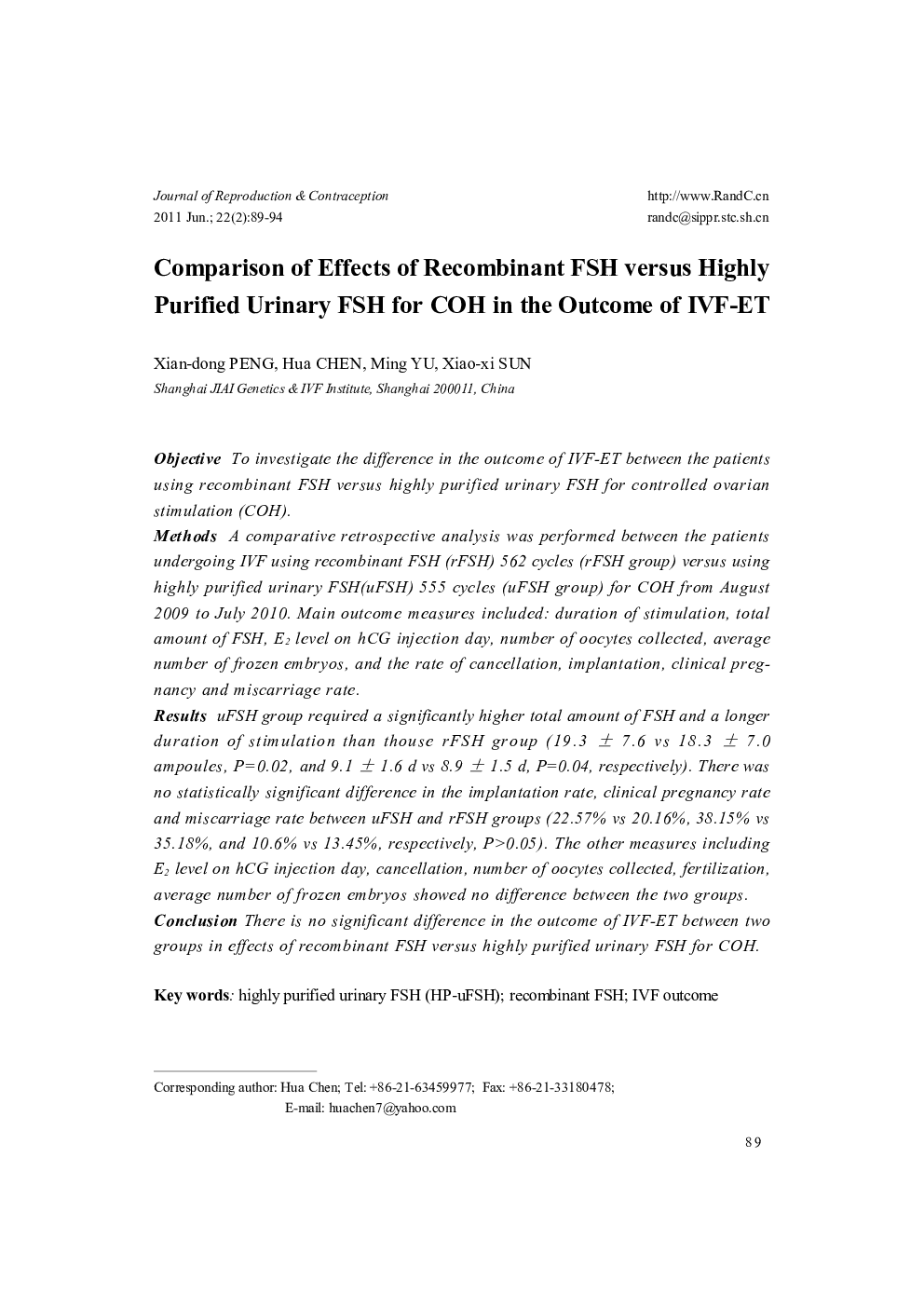| کد مقاله | کد نشریه | سال انتشار | مقاله انگلیسی | نسخه تمام متن |
|---|---|---|---|---|
| 3963987 | 1255774 | 2011 | 6 صفحه PDF | دانلود رایگان |

ObjectiveTo investigate the difference in the outcome of IVF-ET between the patients using recombinant FSH versus highly purified urinary FSH for controlled ovarian stimulation (COH).MethodsA comparative retrospective analysis was performed between the patients undergoing IVF using recombinant FSH (rFSH) 562 cycles (rFSH group) versus using highly purified urinary FSH(uFSH) 555 cycles (uFSH group) for COH from August 2009 to July 2010. Main outcome measures included: duration of stimulation, total amount of FSH, E2 level on hCG injection day, number of oocytes collected, average number of frozen embryos, and the rate of cancellation, implantation, clinical pregnancy and miscarriage rate.ResultsuFSH group required a significantly higher total amount of FSH and a longer duration of stimulation than thouse rFSH group (19.3 ± 7.6 vs 18.3 ±7.0 ampoules, P=0.02, and 9.1 ± 1.6 dvs 8.9 ± 1.5 d, P=0.04, respectively). There was no statistically significant difference in the implantation rate, clinical pregnancy rate and miscarriage rate between uFSH and rFSH groups (22.57% vs 20.16%, 38.15% vs 35.18%, and 10.6% vs 13.45%, respectively, P>0.05). The other measures including E2 level on hCG injection day, cancellation, number of oocytes collected, fertilization, average number of frozen embryos showed no difference between the two groups.ConclusionThere is no significant difference in the outcome of IVF-ET between two groups in effects of recombinant FSH versus highly purified urinary FSH for COH.
Journal: Journal of Reproduction and Contraception - Volume 22, Issue 2, June 2011, Pages 89-94